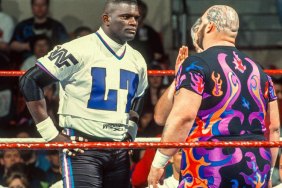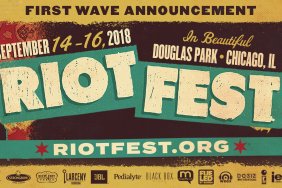Photo: Jerry Lee Lewis, Ramada Inn, Boston, MA, 1975 (detail).
The late songwriter Harland Howard, who penned Patsy Cline’s “I Fall to Pieces” and Ray Charles’ “Busted,” was once asked what makes a great country song. “Three chords and the truth,” Howard said, as succinct as the music he wrote. Like all things country, the very best doesn’t overly complicate itself: simplicity is the heart and soul of the people, and their music reflects this through and through.
Also: Big Hair, Big Cars & Plaid Pants: Henry Horenstein’s “Tales from the 70s”
But it’s not mere simplicity, in the sense of “Less is more.” Rather, it is the precise ability to speak to the people on their own terms. Nothing fancy or sophisticated, no need for the trappings of bourgeois aspirations of elitist status or wealth. Country is, in the truest sense, the culture of the folk.

Harmonica Player, Merchant’s Cafe, Nashville, TN, 1974
Country music in America comes from the heartland, from the great fly over states that people on both coasts are quick to disregard. But deep in this landscape, the funky twang is set free, and it travels beyond the region, from sea to shining sea. This sensibility can be seen in the new exhibition, Henry Horenstein: Honky Tonk: Portraits of Country Music on view at the Newport Art Museum in Newport, RI, now through September 10, 2017.
Henry Horenstein began documenting the country music scene half a century ago, shooting everyone from Dolly Parton, Emmylou Harris, Jerry Lee Lewis, and Waylon Jennings to the local performers, patrons, and honky tonks that made the culture go. The exhibition features a selection of works made between 1972 and 1981, when shows like Hee Haw were at the their height.
Horenstein first happened upon country music at Melody Shop, a record store in a New Bedford, MA, when he was just eight years old. A local folksinger named Paul Clayton used to hang out at the shop, and he had helped to rearrange “Gotta Travel On,” a hit for country singer Billy Grammer in 1959. Clayton put Horenstein on to the good stuff, recommending the young boy buy “Johnny Cash Sings Hank Williams.” It was Horenstein’s first LP purchase, and far from his last, as it set him on a path rooted in love of country music.
Horenstein attended the University of Chicago, where he studied history, absorbing the postmodern lessons of the time, which taught him, “There is no pure ‘truth’; what you read depends very much on the point of view of the teller—or the historian.”
He also learned that, “The points of view of ‘successful’ people and cultures were the ones most often remembered. They were in the best position to write down and record what they accomplished, what they felt, and what they believed in… The most important job of the historian was to record the stories of people and cultures that were not “’successful,’ because they would eventually disappear and the history left behind would be an unfinished one.”
By the time Horenstein picked up photography in his junior year, his philosophy of creating history had taken root. His photography professor, Harry Callahan encouraged him to shoot what he loved. Horenstein remembers, “Callahan was saying the same thing as Harlan Howard: Tell your truth and be yourself. How could I have missed that? And so I started photographing even more around music shows and concerts. Harry told me that even if I got lousy pictures, I would probably have a good time.”
In 1973, he set out on the road, driving down to Nashville where he photographed shows at the Grand Ole Opry and Tootsies Orchid Lounge, taking in the scene on all levels, getting to know the performers, with some inviting him to their homes. He went north to New Hampshire where he enjoyed Sundays in the summer at the Lone Star Ranch, a country music theme park, which showcased legends like Ernest Tubb, George Morgan, and Mother Maybelle Carter.
“I always saw this as a disappearing world that I wanted to preserve on film,” Horenstein observes. “As I look back, many years later, it’s sad to see that I wasn’t far off. Many of the people and the places pictured here are long gone, though some have adjusted and survived. There are some bright spots. Bluegrass festivals are thriving and the Ryman Auditorium, former home of the Grand Ol’ Opry, has been restored. Tootsies Orchid Lounge is now branded as ‘The World’s Greatest Honky Tonk.’
“But the Hillbilly Ranch and so many lesser honky tonks have faded away. There are hardly any country music parks left. And we’ve lost so many great musicians, naturally, and along with them went a way of life. In the years to come, I expect that everyone will remember mega stars like Elvis Presley and Johnny Cash, but I wonder: Will they remember Kitty Wells, Ernest Tubb, or, for that matter, Hillbilly Tex? These pictures were made in hopes that they will.”
All photos: © Henry Horenstein.
Miss Rosen is a journalist covering art, photography, culture, and books. Her byline has appeared in L’Uomo Vogue, Vogue Online, The Undefeated, Dazed Digital, Aperture Online, and Feature Shoot. Follow her on Twitter @Miss_Rosen.
Honky Tonk
-
"Henry Horenstein: Honky Tonk: Portraits of Country Music" Exhibit at the Newport Art Museum

Waylon Jennings, Performance Center, Cambridge, MA 1975. © Henry Horenstein.
-
"Henry Horenstein: Honky Tonk: Portraits of Country Music" Exhibit at the Newport Art Museum

Drunk Dancers, Merchant's Cafe, Nashville, TN, 1974. © Henry Horenstein.
-
"Henry Horenstein: Honky Tonk: Portraits of Country Music" Exhibit at the Newport Art Museum

Last Call, Tootsie's Orchid Lounge, Nashville, TN, 1974. © Henry Horenstein.
-
"Henry Horenstein: Honky Tonk: Portraits of Country Music" Exhibit at the Newport Art Museum

Early Bird, Bakersfield, CA, 2014. © Henry Horenstein.
-
"Henry Horenstein: Honky Tonk: Portraits of Country Music" Exhibit at the Newport Art Museum

Playing for Tips, Tootsie's Orchid Lounge, Nashville, TN, 1974. © Henry Horenstein.
-
"Henry Horenstein: Honky Tonk: Portraits of Country Music" Exhibit at the Newport Art Museum

Jukebox, Tootsie's Orchid Lounge, Nashville, TN, 1972. © Henry Horenstein.
-
"Henry Horenstein: Honky Tonk: Portraits of Country Music" Exhibit at the Newport Art Museum

Jerry Lee Lewis, Ramada Inn, Boston, MA, 1975. © Henry Horenstein.
-
"Henry Horenstein: Honky Tonk: Portraits of Country Music" Exhibit at the Newport Art Museum

Harmonica Player, Merchant's Cafe, Nashville, TN, 1974. © Henry Horenstein.




